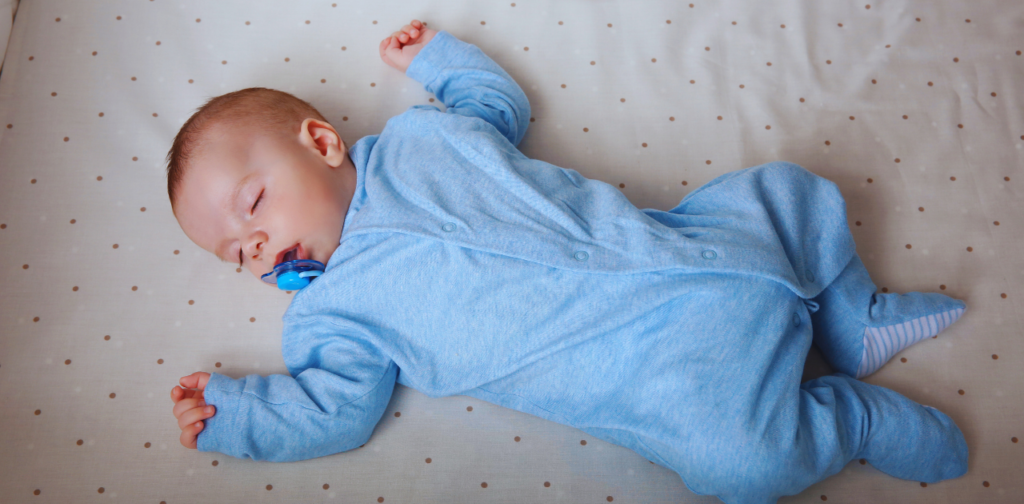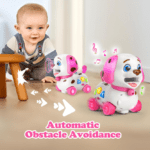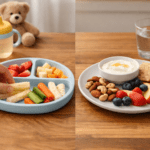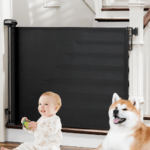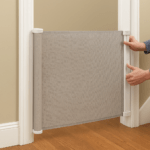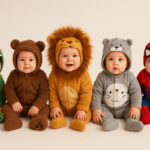The decision of whether or not to remove a pacifier when a baby is sleeping often weighs heavily on the parents’ minds. It’s a topic that can spark debates, stir up doubts, and leave caregivers feeling torn between their desire to ensure their baby’s comfort and their concern for their little one’s well-being. In this exploration of the pacifier dilemma, we’ll delve into the soothing benefits pacifiers offer and the potential risks they pose during sleep, as well as the strategies parents can employ to navigate this decision.
From soothing sweet dreams to facing the possibility of sleepless nights, this article aims to provide clarity and guidance to parents grappling with the question: Should I remove the Pacifier when my baby is sleeping?
Understanding the Importance of Pacifiers

Pacifiers play a significant role in soothing infants and providing comfort during their early stages of life. Beyond just satisfying a baby’s innate need to suck, pacifiers offer a range of benefits that contribute to their overall well-being. They can help calm a fussy baby, provide a sense of security, and even reduce the risk of sudden infant death syndrome (SIDS) by promoting safe sleep practices.
Additionally, pacifiers have been shown to aid in the development of self-soothing skills, which can benefit both babies and parents. Understanding the importance of pacifiers goes beyond their immediate soothing effects; it encompasses their role in promoting healthy sleep habits, fostering emotional security, and supporting infants’ overall comfort and well-being.
What age should I consider weaning my baby off the Pacifier?

The ideal age to consider weaning your baby off the Pacifier typically falls between 6 to 12 months old. During this time, babies are usually more adaptable to routine changes and less likely to form strong dependencies on pacifiers. Weaning at this stage helps mitigate the risk of prolonged pacifier use, which can lead to dental issues and potential dependency concerns later on. However, every baby is unique, and there is no one-size-fits-all approach to pacifier weaning. Observing your baby’s readiness and gradual progress is essential, considering factors such as sleep patterns, soothing needs, and overall comfort. Consulting with your pediatrician can provide personalized guidance tailored to your baby’s specific developmental stage and individual needs, ensuring a smooth transition away from pacifiers when the time is right.
Benefits of Pacifiers
Pacifiers offer a multitude of benefits for both babies and parents alike. Here’s a closer look at some of the advantages they provide:
- Soothing Effect: Pacifiers satisfy a baby’s instinct to suck, offering immediate comfort and soothing during periods of fussiness or distress. The rhythmic sucking motion can help calm a baby and provide a sense of security.
- Reduced Risk of SIDS: Studies have shown that the use of pacifiers during sleep can significantly decrease the risk of sudden infant death syndrome (SIDS). The gentle sucking action may help keep a baby’s airway open and promote safer sleep practices.
- Eases Transitioning: Pacifiers can aid in transitioning babies from breastfeeding or bottle-feeding to independent sleep. They provide a familiar source of comfort, making it easier for babies to settle themselves to sleep without relying solely on feeding.
- Promotes Self-Soothing: Over time, pacifier use can help babies develop self-soothing skills, allowing them to comfort themselves and fall asleep more independently. This can be beneficial for both daytime naps and nighttime sleep routines.
- Pain Relief: Pacifiers can temporarily relieve discomfort caused by teething or other minor ailments. The act of sucking on a pacifier can distract babies from their discomfort and provide a comforting sensation.
- Parental Relief: For parents, pacifiers can be a lifesaver during exhaustion or when soothing techniques are needed. They offer a simple and effective tool for calming a fussy baby, allowing parents to catch a much-needed break or tend to other tasks.
Concerns About Pacifiers During Sleep
Concerns about pacifiers during sleep primarily revolve around the potential drawbacks of prolonged or inappropriate use. Here are some common concerns:
- Dependency on Pacifiers: Extended reliance on pacifiers during sleep may lead to a dependency on them for soothing, making it challenging for babies to self-soothe and settle back to sleep without them.
- Potential Disruption of Sleep: If a pacifier falls out of a baby’s mouth during sleep, they may wake up seeking it, disrupting their sleep patterns and potentially causing fatigue for both the baby and parents.
- Dental Concerns: Prolonged use of pacifiers, especially during sleep, can affect dental development. Continuous pressure on the teeth and gums from sucking on a pacifier can lead to dental issues such as misalignment or malocclusion.
- Risk of SIDS: While pacifiers can reduce the risk of sudden infant death syndrome (SIDS) when used during sleep, there is still a concern that a pacifier could pose a choking hazard if it becomes dislodged during sleep.
- Speech Development: Excessive pacifier use, particularly during sleep, may interfere with the developing of proper speech and language skills in babies.
How do you choose the best Pacifier For your child?
Choosing the best Pacifier for your child involves considering several factors to ensure safety, comfort, and effectiveness. Here’s how to make the right choice:
Consider Age and Size:
Select a pacifier appropriate for your child’s age and size. Pacifiers come in different sizes and nipple shapes for newborns, infants, and older babies. Choose one that fits your child’s mouth comfortably without being too small or too large.
Look for Safety Features:
Opt for pacifiers that meet safety standards and regulations. Check for features like a one-piece design to reduce choking hazards, ventilation holes to allow for airflow, and a large shield to prevent the Pacifier from being swallowed.
Choose the Right Material:
Pacifiers are typically made from silicone or latex. Silicone is more durable, easy to clean, and resistant to odors and stains, making it a popular choice. Latex pacifiers are softer and more flexible but may cause allergies in some children.
Check for Orthodontic Design:
Consider pacifiers with an orthodontic design, which mimics the shape of a mother’s nipple and promotes proper oral development. These pacifiers support the natural development of a baby’s palate, teeth, and gums.
Test for Comfort:
Before committing to a pacifier, allow your child to test different options to see which one they prefer. Look for signs of comfort, such as relaxed sucking and contentment, to determine the best fit for your child.
Evaluate Durability and Maintenance:
Choose pacifiers that are easy to clean and maintain. Look for dishwasher-safe options or pacifiers that can be sterilized to ensure proper hygiene. Additionally, consider the Pacifier’s durability and opt for ones that can withstand frequent use without deteriorating.
Consider Personal Preferences:
Every child is unique, so consider your child’s preferences when selecting a pacifier. Some babies may prefer pacifiers with textured or contoured nipples, while others may be more comfortable with a smooth, rounded shape.
Read to know more:Curious Phenomenon: Why Babies Sleep with Their Butt in the Air?
Should I remove the Pacifier as soon as my baby falls asleep?

Removing the Pacifier once your baby has fallen asleep is generally recommended, especially if you notice they’re in a deep sleep. This approach can help prevent sleep disruptions when the Pacifier falls out of their mouth at night. Removing the Pacifier once your baby is asleep encourages them to self-soothe and fall back asleep independently if they wake up at night. However, every baby is different, and some may be able to sleep comfortably with the Pacifier throughout the night without any issues. If your baby tends to wake frequently when the Pacifier falls out, you may want to consider gradually weaning them off during sleep by removing them once they are in a deeper sleep stage. Ultimately, the decision to remove the Pacifier when your baby falls asleep depends on their individual sleep patterns and comfort levels, as well as your preferences as a parent.
When to Remove Pacifiers During Sleep?
Determining the appropriate time to remove pacifiers during sleep is a decision that hinges on various factors unique to each baby. Generally, pediatricians suggest gradually weaning babies off pacifiers between 6 and 12 months to prevent prolonged dependency and potential dental complications. Observing your baby’s sleep patterns is crucial in discerning the ideal moment for pacifier removal. If your baby frequently wakes when the Pacifier falls out, it may indicate a reliance on it for sleep. In such cases, gradually transitioning away from pacifier use during sleep can foster the development of self-soothing skills. Consulting with pediatricians offers valuable insight and tailored recommendations, considering your baby’s needs and developmental stage. By methodically introducing changes and providing support, parents can help their babies adapt to sleep without pacifiers while promoting healthy sleep habits for the long term.
How can I help my baby sleep without a pacifier?
Helping your baby sleep without a pacifier requires patience, consistency, and gentle encouragement. Here are some strategies to help your baby transition away from pacifier dependency:

- Establish a Consistent Bedtime Routine: Create a soothing bedtime routine that signals your baby that it’s time to sleep. Consistency helps your baby associate specific activities with bedtime, making the transition easier.
- Introduce Alternative Comfort Objects: Offer your baby a soft blanket, stuffed animal, or lovey to cuddle with instead of a pacifier. Encourage them to form a positive association with these objects during sleep.
- Gradually Reduce Pacifier Use: Start by limiting Pacifier use to bedtime and naptimes, gradually reducing the duration of pacifier use during sleep. This gradual approach helps your baby adjust to sleeping without the Pacifier.
- Provide Comfort and Support: Be present for your baby during the transition period, offering comfort and reassurance when needed. Respond promptly to your baby’s cues for comfort and support as they learn to self-soothe without the Pacifier.
- Offer Gentle Distraction: If your baby wakes during the night seeking the Pacifier, gently distract them with soothing techniques such as gentle rocking, patting, or singing. Redirecting their attention can help them settle back to sleep without relying on the Pacifier.
- Be Patient and Consistent: Remember that transitioning from pacifier use takes time and patience. Stay consistent with your approach and provide loving support as your baby learns to sleep without the Pacifier.
Tips for Pacifier Use During Sleep
When using pacifiers during sleep, there are several tips to ensure safe and effective usage:
- Choose the Right Pacifier: Opt for pacifiers explicitly designed for sleep, with features like a symmetrical nipple and ventilation holes to minimize the risk of suffocation.
- Establish a Routine: Incorporate the Pacifier into your baby’s bedtime routine to signal that it’s time to sleep. Consistency can help your baby associate the Pacifier with sleep.
- Gradual Weaning Process: If you decide to wean your baby off pacifiers during sleep, do so gradually. Start by removing the Pacifier once your baby is in a deep sleep and progressively increase the duration without it.
- Monitor Pacifier Use: Keep an eye on how often and for how long your baby uses the Pacifier during sleep. Limiting Pacifier use to bedtime, and naptime can help prevent overreliance.
- Respond Promptly to Disruptions: If the Pacifier falls out during sleep and your baby wakes up, respond promptly to soothe them back to sleep without relying solely on the Pacifier.
- Check for Safety: Regularly inspect pacifiers for signs of wear and tear and replace them as needed to ensure your baby’s safety.
- Encourage Self-Soothing: Gradually encourage your baby to self-soothe by providing alternative comfort objects, such as a lovey or blanket, to help them transition away from pacifiers during sleep.
Parental Dilemmas and Decision-Making
Parental dilemmas regarding pacifier use during sleep can be complex and nuanced, requiring careful consideration and decision-making. One common dilemma revolves around balancing the soothing benefits of pacifiers with concerns about dependency and potential sleep disruptions. Parents may grapple with questions about removing the Pacifier once their baby is asleep or allowing them to self-soothe with it throughout the night. Additionally, there may be concerns about the impact of pacifier use on dental development and speech patterns, prompting parents to weigh the potential risks against the immediate comfort pacifiers provide.
Decision-making in these situations often involves a blend of parental intuition, expert advice from healthcare professionals, and understanding individual babies’ needs and behaviors. Ultimately, parents strive to make informed choices, prioritizing their baby’s safety, comfort, and overall well-being while considering their sleep and caregiving needs. By navigating these dilemmas thoughtfully and seeking guidance when needed, parents can find a balanced approach to pacifier use during sleep that works best for their family.
FAQ
- How do I know if my baby is too dependent on the Pacifier?
- Signs of pacifier dependency include difficulty soothing without it and waking frequently when it falls out during sleep.
- Is it safe for my baby to sleep with a pacifier?
- Yes, pacifiers can reduce the risk of sudden infant death syndrome (SIDS) when used during sleep. However, it’s essential to monitor pacifier use and follow safety guidelines.
- When should I consider weaning my baby off the Pacifier?
- Pediatricians recommend gradually weaning babies off pacifiers between 6 and 12 months of age to prevent prolonged dependency and potential dental issues.
- Can pacifiers cause dental problems in babies?
- Prolonged use of pacifiers, especially after age two, can contribute to dental problems such as misalignment or malocclusion. It’s essential to monitor pacifier use and wean babies off them gradually.
Conclusion
In conclusion, the decision to use pacifiers during sleep is multifaceted, balancing the soothing benefits they offer with potential concerns about dependency and safety. By understanding the importance of pacifiers, addressing common problems, and implementing effective strategies for pacifier use, parents can navigate this aspect of infant care with confidence. Whether choosing the correct Pacifier, establishing healthy sleep routines, or gradually weaning babies off pacifiers, prioritizing safety and individualized care ensures a positive experience for both babies and parents, fostering healthy sleep habits and overall well-being.
